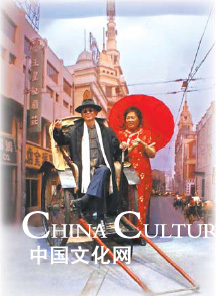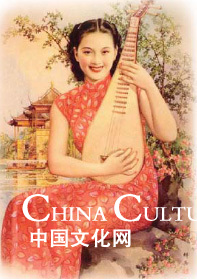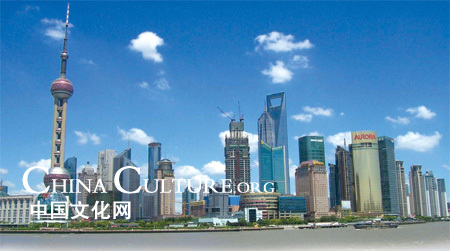Sibling rivalry
If there are two famous waterfronts in the world that in the past century have provided mirror images of each other, they are Shanghai's Bund and Victoria Harbor in Hong Kong.
These days, the lampposts and Renaissance-style architecture that lined those waterfront promenades and gave rise to the two cities' reputation as ultimate Asian funhouses in the 1930s have partly gone, replaced by glass-and-aluminum-clad skyscrapers, potent symbols of not only their financial prowess, but also an ambition long shared.
|
|
|
New landmark buildings at Lujiazui, Pudong district in Shanghai. |
Ever since the State Council announced its plan to establish Shanghai as "a global financial centre and shipping hub by 2020", the long simmering debate of Hong Kong Vs Shanghai has been catapulted to new heights. The prevailing sense, at least in Hong Kong, is that Shanghai holds the trump card and "the Pearl of the Orient", as a result, is losing out.
An exhibition, "Modern Metropolis - Material Culture of Shanghai and Hong Kong" is on at the city's History Museum. Spotlighting the first 100 years (1840-1949) of a still-unfolding "tale of the twin cities", it demonstrates their relationship as one characterized by emulation, rivalry and some strange version of love - a pas de deux with a tricky choreography and a constantly-changing lead.
Before 1840, Shanghai was a prosperous county with a population exceeding 100,000, while Hong Kong was a speck of land, an isolated fishing village with no more than 5,000 permanent residents. But the First Opium War, and the subsequent signing of the Treaty of Nanking, changed all that. Shanghai became a trading port and Hong Kong Island ceded to the British. A new chapter had begun in which the memories of the two cities became interwoven.
 |
|
Residents pose for pictures in old-fashioned clothes, popular in the 1930s' Shanghai. Jing Wei |
"I couldn't say it was pure coincidence but Shanghai could have paired with any other Chinese city," says Chan Shing Hon, assistant curator of the Hong Kong Museum of History, who helped organize the show. "Given its prime geographical location in the center of China's coastline, Shanghai would have risen to prominence whatever course the country's contemporary history may take."
Hong Kong, on the other hand, was a totally different case - the British only reluctantly took the island after their demand for Zhoushan, a port city near Shanghai, had been stubbornly refused by the Qing government.
Bounded by circumstances, Shanghai and Hong Kong began their fast twirl toward modernity. While the former may have set the faster tempo, the two cities swapped the lead when it came to embracing new things. The rickshaw, a Japanese invention, was introduced to Shanghai and Hong Kong in 1873 and 1874 respectively. In 1881, Hong Kong launched its first public telephone service and Shanghai followed one year later.However, the different nature of the two societies - Hong Kong being a British colony and Shanghai, a city divided among Chinese and foreign powers - meant that things that were easily picked up by Hong Kong would usually take much longer time to be fully adopted in Shanghai.
One example is the public tram service, which, at its inception in Hong Kong in 1904, covered the entire island. In Shanghai, it first became available in the International Settlement, before being introduced to French Concession, and finally, the rest of Shanghai known as the Chinese District, in 1913.
 |
|
An old Shanghai poster featuring a pipa performer. File photo |
But according to Zhang Wenyong, researcher from the Shanghai History Museum, such "desynchronization" may not necessarily be a bad thing.
"It's true that different administrative zones tended to have different timetables and favor different operating companies but that also created an element of competition," he says. "Besides, there's also plenty of cooperation. For the cars to run throughout the city, the different track designs must feature the same width."
The presence of more than one foreign influence had contributed greatly to Shanghai's multi-culturalism, says Ting Sun-pao, former chief curator of the Hong Kong Museum of History. "In sharp contrast to Hong Kong, which saw itself fall unequivocally for a singular British culture, Shanghai was ultimately more internationalized and open-minded," he says.
And contrary to common belief, Shanghai, with its walled concession areas, had proven to be a more porous society than Hong Kong, where Chinese and foreigners "lived in two worlds". Ideas clashed and gave birth to such "cultural freaks" as Liu Haisu, who brought nude models into painting classes and Zhang Jingsheng, who advocated sex education.



















